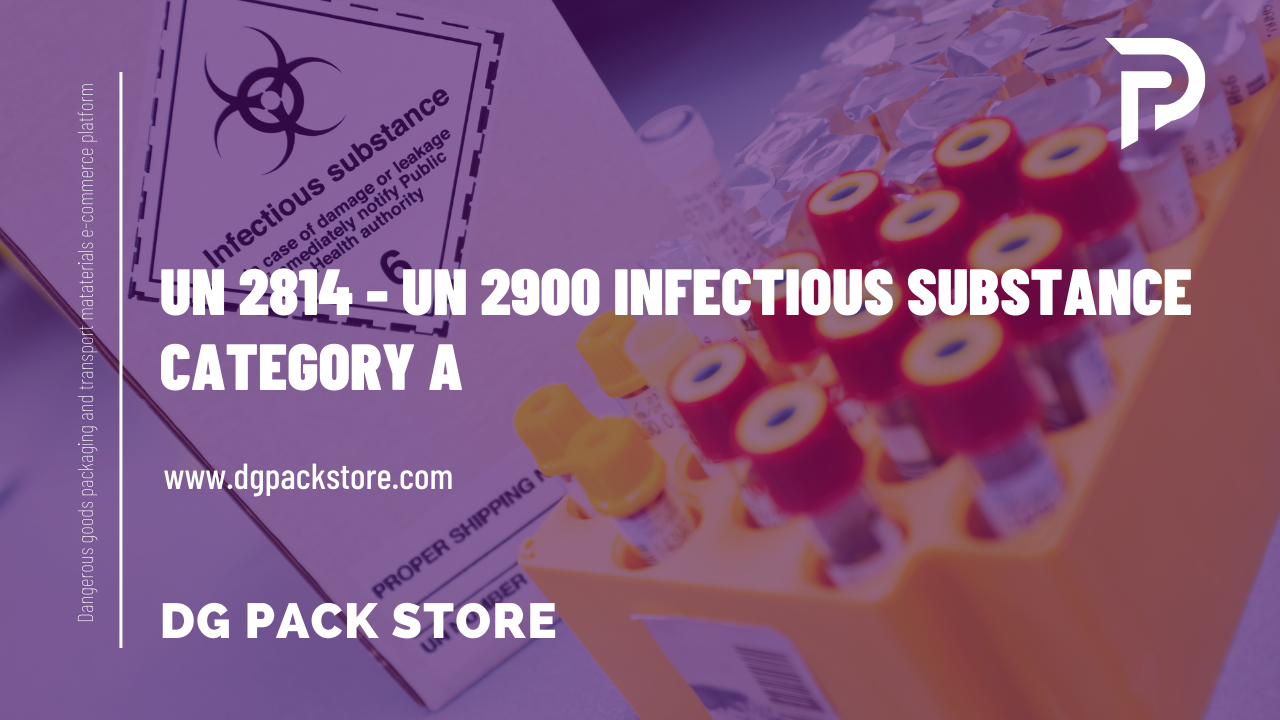What is UN 2814 & UN 2900 Category A infectious substances?
22-12-2022
13:13

UN 2814 and UN 2900 are classifications for hazardous materials in the transportation industry. These classifications are used to identify and label hazardous materials that are being shipped, as well as to provide information on how to safely handle, transport, and store these materials.
Category A infectious substances have two shipping names: “Infectious substances, affecting humans” (UN 2814) or “Infectious substances, affecting animals” (UN 2900). Packaging. Category A infectious substances must be triple packaged and compliant with IATA Packing Instruction 602 diagrammed below.
UN 2814 is the classification for infectious substances, which are materials that are capable of causing disease in humans or animals. These substances can be in the form of bacteria, viruses, fungi, or parasites, and they can be present in solid, liquid, or gaseous form.
UN 2900 is the classification for diagnostic specimens, which are materials that are collected for the purpose of diagnosing, monitoring, or researching a disease or other medical condition. These specimens can include blood, urine, feces, and tissue samples, and they may contain infectious substances.
Both UN 2814 and UN 2900 materials require special handling and packaging to ensure the safety of those who come into contact with them. These materials must be properly labeled with the appropriate hazard warnings, and they must be packaged in containers that are resistant to leakage, breakage, and tampering.
In addition to the labeling and packaging requirements, there are also specific transport requirements for UN 2814 and UN 2900 materials. These materials must be transported in vehicles that are equipped with specialized containment and handling systems, and the drivers of these vehicles must be trained in the proper handling of hazardous materials.
Overall, the UN 2814 and UN 2900 classifications are important tools for ensuring the safe transportation of infectious and diagnostic materials. By following the proper procedures and guidelines, we can help to prevent the spread of disease and protect the health and safety of those who handle these materials.
Visit our category a infectious substance UN2814 - UN 2900 boxes: https://www.dgpackstore.com/en/category/packaging-infectious-substances-un2814-un2900-203
Visit our secondary packaging internal caps: https://www.dgpackstore.com/en/category/clinical-internal-caps-secondary-packaging-220
Visit our dangerous goods class 6.2 infectious substance label: https://www.dgpackstore.com/en/product/Class-6-2-infectious-substance-label
Visit our category a infectious substance UN2814 - UN 2900 boxes: https://www.dgpackstore.com/en/category/packaging-infectious-substances-un2814-un2900-203
Visit our secondary packaging internal caps: https://www.dgpackstore.com/en/category/clinical-internal-caps-secondary-packaging-220
Visit our dangerous goods class 6.2 infectious substance label: https://www.dgpackstore.com/en/product/Class-6-2-infectious-substance-label
